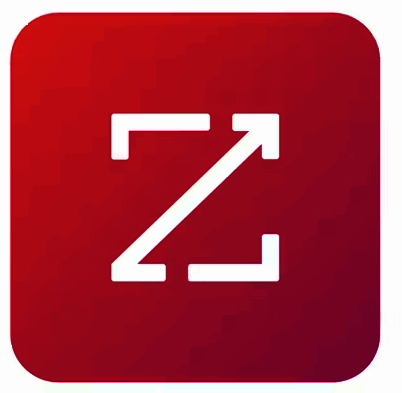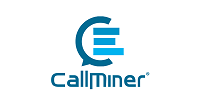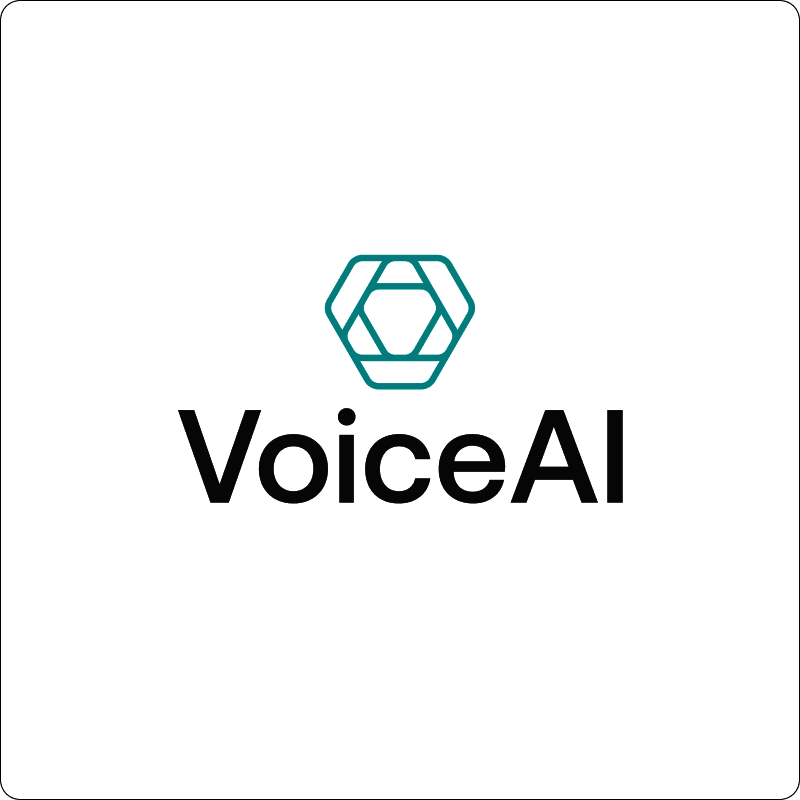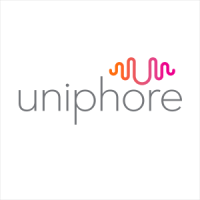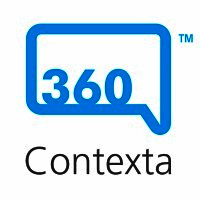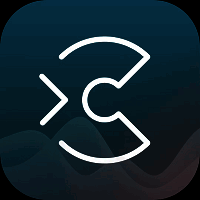What Is Speech Analytics Software?
Speech analytics software is a strong tool for analyzing and extracting insights from spoken interactions using modern technologies such as natural language processing and machine learning. This technology enables businesses to automatically transcribe and interpret enormous volumes of consumer interactions across several channels, including calls, emails, chat, and social media chats.
Businesses can use speech analytics software to analyze patterns, trends, and sentiment in customer interactions, giving useful information for decision-making and improving the customer experience. The software may also identify terms and phrases that suggest client contentment, displeasure, or impending problems, allowing businesses to address issues ahead of time and improve service delivery.
In addition to consumer data, speech analytics software may track agent performance, highlight areas for development, and provide coaching opportunities. This results in higher-quality encounters, more agent productivity, and greater customer pleasure. Furthermore, speech analytics software includes capabilities like real-time monitoring, customized dashboards, and automated warnings, making it a highly efficient and scalable option for enterprises of any size.
It can also be integrated with other customer service tools and systems to provide a complete picture of customer interactions. Investing in speech analytics software can provide various advantages to a business, including higher customer satisfaction, income, and cost savings. With its ability to analyze enormous amounts of data and give actionable insights, this software has become an essential tool for businesses wanting to improve customer service and stay competitive.
What Are The Recent Trends In Speech Analytics Software?
Speech analytics software has evolved significantly in recent years, driven by technological improvements and an ever-increasing demand for more complex and precise data processing. As a result, a number of trends have emerged, changing the market and increasing the value of speech analytics solutions for businesses of all kinds. One of the most notable developments in speech analytics software is the incorporation of artificial intelligence (AI) and machine learning (ML) capabilities.
This enables more advanced and accurate analysis of speech patterns, tones, and emotions, resulting in deeper insights into customer behavior and mood. AI and machine learning also allow for real-time monitoring and decision-making, increasing the value of voice analytics in today's fast-paced commercial environment. Another key trend is the use of omnichannel capabilities, which enable speech analytics software to analyze and process data from different communication channels such as phone calls, emails, chats, and social media.
This provides a holistic perspective of client interactions and allows firms to spot patterns and trends across several platforms, resulting in a more complete understanding of customer behavior. Furthermore, there has been an increase in the adoption of cloud-based speech analytics tools, which provide easier access, scalability, and cost effectiveness.
With the rise of remote work and the requirement for real-time data analysis, cloud-based choices have grown in popularity among enterprises wishing to use speech analytics software. Furthermore, there has been an emphasis on customer experience and sentiment analysis in voice analytics software. Businesses can now measure and evaluate client emotions and experiences in real time, gaining significant insights into how their products and services are viewed.
This enables more tailored and effective customer service and marketing efforts, resulting in higher overall customer satisfaction. Finally, speech analytics software is becoming more adaptable and user-friendly, with intuitive dashboards, customized reports, and simple interaction with other tools and systems. This makes it easy for enterprises to adopt and use speech analytics tools, regardless of technical proficiency.
Benefits Of Using Speech Analytics Software
Speech analytics software is a useful tool that may help businesses in a wide range of industries. It is a technology that enables businesses to evaluate and use data from consumer interactions, particularly phone conversations and recorded calls. This software employs powerful algorithms and artificial intelligence to transcribe and analyze voice, allowing businesses to get important insights into their consumers' requirements, behaviors, and preferences.
One of the primary advantages of utilizing speech analytics software is the ability to enhance customer service and happiness. Analyzing client interactions allows firms to uncover patterns and trends in customer behavior, preferences, and pain areas. This data can then be used to create improvements to products, services, and procedures, resulting in a more favorable customer experience.
This, in turn, can lead to greater client satisfaction and loyalty. In addition to boosting customer service, speech analytics software assists firms in identifying and addressing operational inefficiencies. Companies that analyze call data can identify areas where there may be gaps in processes, training requirements, or technology. This enables them to make proactive changes and enhancements, resulting in a more efficient and productive organization.
Another benefit of employing speech analytics software is that it increases sales and revenue. Businesses can better address typical consumer objections and concerns by tailoring their sales methods and message based on call analysis. This can result in an increase in sales and total revenue. Speech analytics software is also an extremely useful tool for compliance and risk management.
It can assist businesses uncover potential compliance issues by highlighting specific terms or phrases in talks. This helps firms to promptly resolve potential infractions and assure compliance with regulatory standards. Furthermore, voice analytics software can help businesses save time and money by automating the transcribing and analysis processes. This reduces the need for manual inspection and analysis of recorded calls, allowing workers to focus on other vital activities.
Important Factors To Consider While Purchasing Speech Analytics Software?
When it comes to choosing speech analytics software, it is critical to weigh several elements in order to make an informed purchase that matches your individual requirements.
Here are some important aspects to keep in mind when analyzing and comparing various options:
1. Accuracy And Reliability: Speech analytics software's primary goal is to accurately and consistently transcribe and analyze spoken material. It is critical to select software that has a high accuracy rate and produces few transcribing errors. Furthermore, the program must be able to manage various audio quality levels, accents, and industry-specific terms.
2. Features And Functionality: It is critical to understand the features and functionalities provided by various voice analytics software in terms of your specific business requirements. Some popular features to consider are real-time monitoring, sentiment analysis, call summary, and integration with other business tools.
3. Deployment Options: Speech analytics software can be installed on-premises or in the cloud. On-premise implementation provides better control and security, whilst cloud-based solutions enable greater flexibility and scalability. Consider your organization's resources and needs to choose the optimal deployment solution for you.
4. Scalability: As your organization expands, so will your demand for speech analytics software. It is critical to select a solution that can scale with your requirements without sacrificing performance or accuracy. This will spare you the headache of switching to a new system in the future.
5. Usability: The software should have a user-friendly interface that is simple to utilize, especially for non-technical users. It should also have effective search and filtering capabilities for quick access to critical data.
6. Data Security: Speech analytics software handles sensitive and secret consumer data. Ensure that the program includes strong security safeguards to secure your data from cyber attacks and unwanted access.
7. Integration Capabilities: To get the most out of your speech analytics software, it should connect easily with your existing systems, such as CRM and workforce management software. This allows you to gain a comprehensive understanding of consumer interactions and make data-driven decisions.
8. Customer Support: Strong customer support is essential, particularly throughout the implementation and training phases. Choose a provider with a dependable customer support team and resources to ensure a smooth and successful onboarding experience.
9. Cost: The price of speech analytics software varies according to the manufacturer, deployment strategy, and features. Before making a decision, consider your budget as well as the value the program can add to your firm.
By taking these variables into account, you can properly analyze and compare various speech analytics software packages to determine which one is most suited to your organization's objectives and goals. Remember to read reviews and customer testimonials to acquire insight into the user experience and any issues. With the proper speech analytics software, you can gain useful insights from customer interactions while driving business success.
What Are The Key Features To Look For In Speech Analytics Software?
When it comes to selecting the best Speech Analytics Software, there are a few crucial elements to consider to ensure that you are making the greatest choice for your company. These characteristics can have a considerable impact on the usefulness and efficiency of your speech analytics tool, so carefully consider them before making a purchase.
1. Speech Recognition Accuracy: The most important aspect to look for in speech analytics software is speech recognition accuracy. The software should be capable of accurately transcribing speech in a variety of accents, dialects, and languages. This feature is critical since it serves as the foundation for all other analytical functionalities, and inaccuracies can have a major impact on the veracity of insights gleaned from data.
2. Real-Time Analytics: Real-time speech analytics is an important feature to include in your software. It enables you to study client interactions as they occur, giving you quick insights into customer mood, behavior, and demands. This capability can be extremely useful for firms that require real-time customer care, sales, or support.
3. Multichannel Capabilities: Speech Analytics Software should be able to evaluate customer interactions across several channels, including phone calls, emails, chat, social media, and more. This multichannel capability gives you a complete picture of the client experience, allowing you to obtain a 360-degree awareness of their preferences and demands.
4. Customizable Dashboards And Reports: Another important feature to look for is the ability to create customized dashboards and reports. These tools enable you to monitor and track key performance indicators (KPIs) and metrics critical to your organization. Customizable dashboards allow you to tailor the interface to your individual business requirements, making it easier to manage and measure your company's progress.
5. Sentiment Analysis: Sentiment analysis is an effective method for determining client feelings and opinions. The correct speech analytics software will assess tone, tempo, volume, and other speech subtleties to accurately estimate customer mood. Sentiment analysis allows you to obtain insights into customer happiness, identify areas for development, and make data-driven decisions that improve the customer experience.
6. Predictive Analytics: Predictive analytics is a sophisticated tool that can deliver valuable information by studying previous consumer interactions and forecasting future behaviours. This function can assist firms in identifying possible issues and addressing them proactively, hence enhancing overall customer happiness and retention.
7. Integration Capabilities: When selecting speech analytics software, you must consider integration capabilities. The software should be able to function easily with your existing company tools, such as customer relationship management (CRM) and workforce management systems. This integration can provide a comprehensive perspective of consumer interactions and facilitate more effective data analysis.
Why Do Businesses Need Speech Analytics Software?
Speech analytics software is an extremely useful tool for businesses of all sizes and sectors. With its advanced technology and functionality, it has become a vital component of many businesses' customer service and operational strategies. One of the primary reasons that organizations use speech analytics software is to obtain important insights into their consumers' preferences and actions.
Businesses can learn about their consumers' requirements, wants, and pain areas by analyzing recorded phone calls, allowing them to make more educated decisions and customize their products and services accordingly. Furthermore, with the advent of omnichannel communication, speech analytics software has become increasingly important. It can evaluate customer interactions across numerous channels, such as phone calls, live chat, email, and social media, giving organizations a complete picture of their consumers' experiences.
Furthermore, speech analytics software can enhance the whole customer support experience by detecting and resolving issues in real time. It uses speech-to-text technologies, sentiment analysis, and keyword identification to identify possible issues during client encounters. This enables organizations to swiftly identify and fix any issues before they escalate, resulting in increased customer satisfaction and retention.
Another key advantage of speech analytics software is that it improves compliance and risk management. Businesses in highly regulated industries, such as healthcare and finance, can use this software to monitor and analyze discussions to ensure compliance with regulations and policies. This can help them avoid costly legal problems and preserve a positive reputation.
In addition to these benefits, speech analytics software can improve employee performance and productivity. Analyzing client interactions allows firms to get insights into their staff' performance and identify areas for development. This enables them to deliver targeted training and coaching to improve their employees' communication abilities, resulting in a more efficient and productive workforce.
How Much Time Is Required To Implement Speech Analytics Software?
The time required to develop speech analytics software depends on a number of factors, including the complexity of the organization's requirements, the volume of data to be analyzed, and the vendor's implementation procedure. However, it can take anywhere between 4 and 12 weeks to properly develop and integrate the software with an organization's existing processes.
During this time, the implementation process consists of various steps. It usually starts with a discovery phase, in which the provider collaborates closely with the company to understand their specific objectives and goals for employing speech analytics. This step could take a few weeks to complete, depending on the organization's size and complexity.
Next, the speech analytics software must be deployed and configured, which might take several days to a few weeks, depending on the organization's systems and needs. The vendor will also have to train the organization's team on how to use the software properly. This training can be done remotely or on-site and usually takes a few days to a week to complete.
After configuring the software and training the team, the next stage is to test and fine-tune the software. This procedure can take several weeks to guarantee that the software is correctly capturing and processing data in accordance with the organization's requirements. Finally, after the installation and testing phases are completed, the speech analytics software is ready for full deployment and integration with the organization's systems.
This can take anything from a few days to several weeks, depending on the organization's processes and the level of integration necessary. Overall, while implementation times may vary, it is critical to provide enough time for the process to enable the smooth and successful integration of speech analytics software into an organization's operations.
What Is The Level Of Customization Available In Speech Analytics Software?
The extent of customisation accessible in speech analytics software is determined by the software's individual capabilities. However, most modern speech analytics software provides a great level of flexibility, allowing customers to tune the system to their specific requirements and preferences. One major area of customization in speech analytics software is the ability to define custom categories and keywords for the software to discover and analyze during call records.
This enables firms to focus on certain KPIs or issues relevant to their sector and aims. Furthermore, speech analytics software often enables users to configure bespoke alerts and notifications based on certain terms or phrases stated during calls. This function is useful for recognizing possible difficulties or opportunities in real time, allowing for prompt action and resolution.
Furthermore, many speech analytics software packages have customizable reporting and dashboard choices, allowing businesses to generate and display data that is most relevant to their operations. This may contain customized visualizations, data filters, and exportable reports. Speech analytics software is also known for providing customizable score and evaluation criteria for call recordings. This enables firms to align software with their own quality assurance criteria and precisely assess performance.
Which Industries Can Benefit The Most From Speech Analytics Software?
Speech analytics software is a strong technology with the potential to alter many industries. This software helps businesses improve customer experience, operational efficiency, and data-driven decision-making by analyzing and extracting important information from recorded interactions.
Let's explore, we'll look at which sectors can gain the most from using speech analytics software.
1. Call Centers And Customer Service: Call centers and customer service departments handle a huge number of consumer interactions on a daily basis. Speech analytics software may evaluate these interactions in real time, identifying customer sentiments and pain spots, and providing actionable insights to improve the customer experience. It can also assist in determining training requirements for call center agents and optimizing call center processes.
2. Healthcare: Speech analytics software has the potential to significantly improve patient happiness and overall care quality. By evaluating patient contacts with doctors and other staff, the software can find opportunities for improvement in patient communication, staff training, and regulatory compliance.
3. Banking And Financial Services: Speech analytics software can assist banks and financial organizations in analyzing client calls to detect fraudulent activity, mitigate compliance risks, and improve customer service. It can also help find upselling and cross-selling opportunities by analyzing client demands and preferences.
4. Retail: Speech analytics software can help firms understand their customers' shopping behaviors and preferences. By evaluating client calls and interactions, the program can provide insights into customer sentiment, product feedback, and opportunities for improvement in customer service.
5. Travel And Hospitality: By monitoring client conversations across many touchpoints like as contact centers, chatbots, and social media, speech analytics software can assist improve customer service in the travel and hospitality industries. It can also help firms uncover trends and patterns in client feedback, allowing them to handle any issues ahead of time.
6. Education: Speech analytics software can be used by educational institutions to analyze student-teacher interactions and improve academic quality. It can provide insights into student engagement, instructor growth areas, and general classroom dynamics.
7. Government And Public Sector: Speech analytics software can help government agencies monitor and analyze citizen interactions, increase the efficiency of public services, and find areas for process improvement and cost savings.
Conclusion
To summarize, selecting the correct speech analytics software is an important decision for businesses trying to improve customer service and acquire useful insights into their interactions. With so many options available on the market, it is critical to carefully study and compare each software's features, cost, and customer service to determine which one best matches your company's needs.
First and foremost, think about your business goals and objectives while deploying speech analytics software. This will help you limit down your selections and choose software that meets your specific needs. Whether you want to increase agent performance, analyze customer mood, or detect trends and patterns in customer interactions, be sure the software you chose can meet these needs.
Next, pay great attention to the features provided by each software. Look for important features like real-time speech recognition, sentiment analysis, and predictive analytics. Consider the software's ease of use, user interface, and compatibility with your existing systems and tools. Another crucial consideration is the software's pricing structure.
Calculate the cost of each software, including any additional expenses such as setup and maintenance, to see which one provides the most value for your money. Do not be hesitant to bargain with suppliers to acquire the best available price. Equally crucial is the software vendor's customer support. Check if they provide dependable technical support and training to ensure a seamless implementation and proper use of the product.
Read customer reviews and testimonials to get a sense of the vendor's track record for customer satisfaction. Finally, don't forget to use free trials or demonstrations to evaluate the product before making a final decision. This will provide you firsthand familiarity with the software's capabilities and allow you to make an informed selection. In conclusion, selecting the appropriate speech analytics software necessitates extensive research and deliberation.
By reviewing your company's demands, comparing features and cost, and evaluating customer assistance, you can choose software that will help you reach your objectives and improve your overall customer service. Remember that a well-chosen speech analytics software can be a significant asset to your company, giving useful insights and propelling success.






